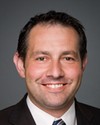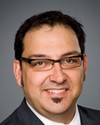Most definitely. Thank you.
We reached out to them on where there needed to be protocol. I think one of the interesting things this committee is examining, or should be examining, is the definition of protocol. I hear the word being used quite a bit, and I would argue some things are not protocol; they're customs, approaches, or processes.
Protocols for us are a little different. When we talk about protocols we look at things such as our national symbols. I believe there need to be protocols for how we use and display our national symbols. When we engaged Canadian Heritage around the half-masting of the flag, we wanted to make sure we respected the protocols that existed. Was there any opportunity, in terms of flexibility, for doing anything differently, particularly related to the death of our own staff while on duty? So we worked with them on where there was absolute protocol that needed to be followed, standards that had to be respected, and where there was some flexibility. That was a really important piece.
We found Canadian Heritage very willing and forthcoming in helping us through that piece. There are some things we believed were protocol, only to find out they weren't. With other things they confirmed, “Yes, this is the way they need to be done.” I think for us and the committee it's just a matter of understanding the definition of protocol and what absolutely is protocol.
Others have commented on having some kind of framework or guideline. I think that's a very interesting approach. As it relates to protocol, I think it should be defined as where there is no opportunity to deviate. When we're talking about national symbols, they should be defined as protocols, but other things should be defined as guidelines and best practices.
Many of the very knowledgeable people around the table here who work in service industries talk about various practices and customs, and some good practices. I think one of the difficulties for organizations such as mine, or other uniformed organizations, in going forward and trying to do things is trying to find out some examples of those best practices. Unless you know Mr. Cole or Mr. McGarry, or know the right people to call, you're sort of left to your own devices to come up with things.
So when you go forward, if you look at establishing something, I think the right place is Canadian Heritage. If you're going to talk about protocols related to national symbols, then also look at putting in place something that is accessible in terms of best practices or approaches, or things that could be considered.
I think Mr. Cole's point earlier about the flag was a really good one. Outside my office are the names of all the employees in our history who have been killed on duty. I've been to many of their funerals, particularly back in the late 1970s and the early 1980s. The most recent one was when we had a staff member murdered in the Northwest Territories. We worked very closely with Canadian Heritage on the funeral because the minister was coming. We worked very closely with the family to respect their wishes. We adopted an approach where we would offer the flag to the family. But we found out very quickly, after going through a dry run, that folding a vinyl flag was impossible. We ended up finding a cloth one that could be starched so we could do it. Starching the flag seems a little strange, but it needed to be done so it could be folded and presented in the proper way. That's the kind of thing you don't know unless you know people like Mr. Cole or Mr. McGarry, or you find out through experience. Then you say, “Okay, next time we can't do that.”






